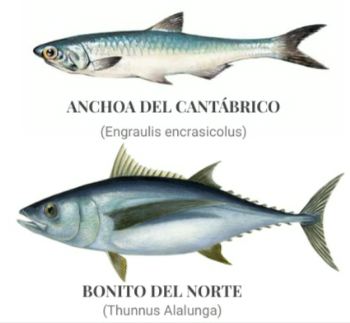|

Photo: Stockfile/FIS
The anchovy relieves the Cantabrian while it waits for the bonito to overcome another crisis
 SPAIN
SPAIN
Monday, May 29, 2023, 15:00 (GMT + 9)
With the fishing quota available and at an average price of about 2 euros per kilo at the auction, professionals in the sector can get more income and save a year that was expected to be very difficult.
- The most complicated coastal anchovy: only two months to catch 40 million
- SOS from Spanish ships in Norway: the 'fishing war' breaks out in the Arctic
- The sinking of fishing: anchovies at 0.70 in the market and 7 euros for the public
The coastal anchovy and bonito are the two most important fisheries of the year for the Galician-Cantabrian fleet. Between March and October, inshore fishing boats from A Guarda to Hondarribia set out to sea in search of these two species, which provide the fleet with close to 80% of the year's income. And in this 2023 the coastal anchovy, between March and June mainly, is being "satisfactory" in terms of catches and price at the market, with an average of two euros per kilogram. A way to alleviate the hardships that the sector has gone through in recent years due to the Covid-19 pandemic, low catches or high fuel prices.
.png) Until the arrival of the bonito, at the beginning of June, the Cantabrian purse seine fleet focuses on anchovy or anchovy fishing, for which it has the highest quota in years, with a total of 30,182 tons. Until the arrival of the bonito, at the beginning of June, the Cantabrian purse seine fleet focuses on anchovy or anchovy fishing, for which it has the highest quota in years, with a total of 30,182 tons. Already at the beginning of the coastal fleet, which these days empties the assigned quota until the middle of the year, expected a "profitable" campaign. And this was expressed a few days ago by the Minister of Economic Development, Sustainability and the Environment of the Basque Government, Arantxa Tapia, when she stated that the development of the anchovy coast up to now "can be described as satisfactory, from the point of view of catches , and it is possible that by the end of May or the beginning of June we will exhaust the quota established for this first semester".
Fishing quota available
With the available fishing quota and at an average price of about 2 euros in the fish market, 1.50 per kilo for medium-sized ones and 2.50 for large ones, which are mostly acquired by canneries, shipowners and sailors can fish' a good pinch with the anchovy, of more than 60 million euros. Even acknowledging that the coastal fishing is going “better” than in previous years, the president of the Federation of Brotherhoods of Gipuzkoa, Eugenio Elduayen, believes that “the fisherman is still not being paid the true value of the anchovy. This year we are bringing quality anchovies and the prices are not in line for now."
The anchovy relieves the fishermen while they wait for the bonito to get out of the crisis. H.Bilbao / Europa Press / ContactPhoto
And after the anchovy, the Cantabrian fishing boats will go after the bonito from the north, the summer fish between the mouth of the Miño river and Cabo de Higuer and, without a doubt, the most important campaign of the fleet that, with a quota of 18,126 tons, the same as in 2022, and at an estimated average price of 4.5 euros per kilo of tuna can bring fishermen and shipowners more than 80 million euros.
.jpg) And although the campaign has not yet started as such, the Gaztelugatxeko Donibane fishing vessel from Pasajes (Gipuzkoa) and the Galician vessel Aradón Berria, unloaded this past May 22 in Avilés (Asturias) 2,300 and 1,500 kilos respectively of bonito caught with hooks in waters close to the Azores islands, in the middle of the Atlantic Ocean. And the first specimens of tuna, caught by the aforementioned Basque fishing boat, were auctioned at a record price of 370 euros per kilo for the first 100-kilo tub, one euro more than last season, and were bought by the Aklimerka supermarket chain.
Even so, it is striking that the first entry of bonito of the year occurs when practically the entire Cantabrian inshore fleet has not even started the fishing campaign for this species and continues immersed in the anchovy fishery. "There had never been a landing of bonito in the Cantabrian Sea so early as this year," says a fish wholesaler from Getaria (Gipuzkoa). “The information that comes to us from the Atlantic points to an unusual increase in the temperature of the water, which is a couple of degrees warmer than other years on these same dates. Hence, the bonito may have advanced the migration it makes every year to feed itself”.
The Cantabrian fleet will still wait a couple of weeks to go out to sea for the bonito. “The tuna campaign is the most important of the year for our fleet. Even more so, after the bad results that the coastal mackerel has left us, in which most of the boats have not even been able to catch half of our quota”, explains the skipper of a fishing boat from Hondarribia (Gipuzkoa).
Author/Source: IÑAKI ETXARRI / La Información(translated from original in spanish)
|
|



